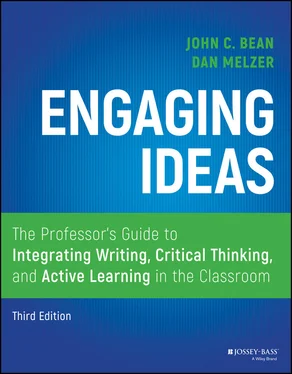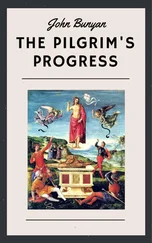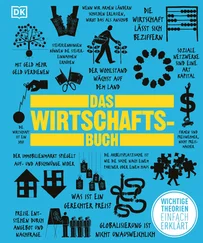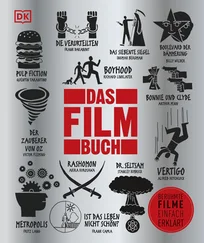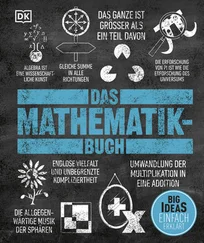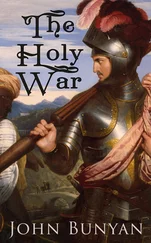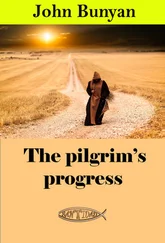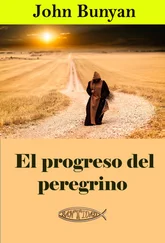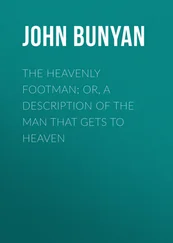1 ...7 8 9 11 12 13 ...25
Step 6: Develop Strategies for Teaching the Genres of Your Discipline and the Ways That These Genres Use Evidence to Support Claims
Instructors in disciplinary courses hope not only to improve their students' critical thinking skills but also to teach them to think like disciplinary experts (to think like historians, psychologists, biologists, business managers, or nurses). To move from novice to expert in a given field, students must learn the discipline's ways of thinking, talking, and writing—what rhetoricians call the field's discourse community. Teachers can accelerate students' understanding of a field by designing assignments that teach students to write within the discipline's typical genres, such as experimental reports, ethnographies, recommendation memos, nursing care plans, design proposals, or field‐specific conference papers suitable for presentation at an undergraduate research conference.
In a prototype paper in many of these genres, the writer typically uses evidence from discipline‐specific primary sources or data to add something new, surprising, or challenging to a conversation carried on within the discipline's secondary sources: “Some scholars have said X (literature review), but I am arguing Y (thesis to be supported by analysis of appropriate primary sources or data).”
What undergraduates particularly need to learn is how different disciplines use different kinds of primary data for evidence. According to Richard Light (2001), “A surprising number of undergraduates describe learning how to use evidence to resolve controversies in their field, whatever their field, as a break‐through idea” (122). Light describes the bafflement of first‐year students as they shift from discipline to discipline, encountering different ways that disciplines gather and use evidence to address problems. Some disciplines derive their evidence from aural, visual, or verbal texts housed in libraries, historical archives, newspapers, art galleries, museums, or cyberspace. Other disciplines use evidence from lab or field research, often subjecting quantitative data to statistical analysis with results displayed in graphs or tables. Still other disciplines use qualitative data from observations of natural or cultural phenomena or from ethnographic notes, focus group transcripts, surveys, or interviews. Students need to see how these kinds of data serve as evidence to support an argument that joins a disciplinary conversation. Chapters 3and 4, as well as chapter 10on teaching undergraduate research, treat the use of disciplinary genres and evidence in more detail.
Step 7: When Assigning Formal Writing, Treat Writing as a Process
In many courses, the student artifact that most fully exhibits critical thinking is a formal paper requiring analysis and argument as opposed to algorithmic calculations. Too often, however, what students submit as finished products are often simply edited rough drafts—the result of an undeveloped and often truncated thinking process that doesn't adequately examine all the available evidence, consider alternative views, develop ideas fully, or imagine the needs of a new reader. Students often avoid or truncate the messy writing process through which undeveloped and initially confusing ideas become gradually focused, deepened, and clarified through successive drafts. No matter how much we emphasize global revision of early drafts, many of our students will continue to write their papers the night before they are due. The most powerful solution is for teachers to structure their courses to promote writing as a process. There are many strategies for promoting writing as process: incorporating exploratory writing into the course (in‐class freewrites, out‐of‐class thinking pieces), breaking difficult assignments into scaffolded parts, teaching metacognitive skills for self‐assessment and reflection, setting due dates for rough drafts, requiring peer review of drafts, scheduling paper conferences, and encouraging use of the campus's writing center. We should note especially that writing centers are effective at teaching students how to use the writing process for brainstorming, organizing, and developing ideas. Experienced tutors or consultants can help students understand the demands of an assignment, draw out initial ideas, overcome writer's block by encouraging imperfect first drafts, and help writers revise for clarity, complexity, and development. On many campuses the director of the writing center is one of an instructor's most important resources for developing ways to incorporate writing into a course. Chapters 11– 16offer many suggestions for encouraging students to deepen and extend their writing processes.
Four Discouraging Beliefs and Some Encouraging Responses
The steps just described can help teachers integrate writing and critical thinking activities into their courses. However, many teachers who are tempted to do so may be held back by negative beliefs or misconceptions about what happens when a teacher begins developing a pedagogy using writing and critical thinking. It will be helpful, therefore, to address these beliefs at the outset. Based on discussions with faculty from across the disciplines, we find the following four misconceptions the most pervasive and potentially discouraging.
Misconception 1: Emphasizing Writing and Critical Thinking in My Courses Will Take Time Away from Content
Many faculty, understandably concerned about coverage of material, do not want to shift class time away from content. In addressing this conundrum, one must first distinguish between how much a teacher “covers” in a given course and how much students actually learn in a meaningful and usable way. Much of the literature on best pedagogical practices suggests that less is more. For example, Robert Zemsky (2009), founding director of the University of Pennsylvania's Institute for Research on Higher Education, argues that “no one has sufficient time or gray matter to master a knowledge base that is growing exponentially every decade or so.” Rather than focus exhaustively on content coverage, Zemsky urges educators to prioritize content, focusing on high‐priority material while simultaneously teaching the critical thinking and problem‐solving skills needed to acquire and apply new knowledge:
Discussions of the changing nature of knowledge often morph into what a successful learning outcome would be if detailed content were actually becoming less important than a well‐executed learning process. The former is static; the latter is dynamic in the sense that learning processes change as the learner seeks new knowledge and tackles new problems.
In our experience, integrating writing and critical thinking components into a course can increase the amount of subject matter that students actually learn. This assertion may seem counterintuitive until one realizes that many kinds of short assignments—particularly short, formal assignments or low‐stakes exploratory writing—can restructure the way students study outside of class. Critical thinking tasks—which require students to use their expanding knowledge of subject matter to address disciplinary problems—motivate better study habits by helping students see their learning as purposeful and interesting. If tasks are designed to improve academic reading (see chapter 7), students often learn to read textbooks and other course materials more powerfully and to interact more critically with primary source readings. With more confidence that students can learn from assigned readings, teachers can, if they choose, redirect some class time away from lecturing over the readings toward critical discussions, small‐group problem‐solving, or other critical thinking activities. The emphasis throughout this book is on helping students learn the subject matter of a course at a deeper and more intellectually mature level.
Читать дальше
